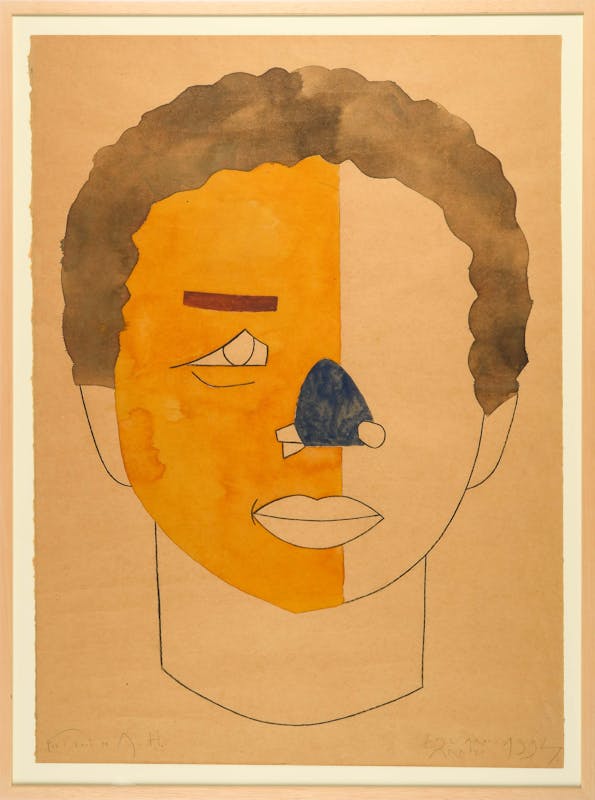Portrait of Arthur Ashe by Eduardo Arroyo
The artist had chosen to represent Arthur Ashe beyond the champion.

With a red eyebrow here, a blue nose there and a tumble of dark hair, the artist Eduardo Arroyo* adopts an approach that does justice to the personality of Arthur Ashe, shown here in watercolour. In what is a flattened pictorial space, these touches of colour say much to the onlooker about the American player’s sheer depth of character.
He was, first and foremost, a man of race who triumphed on the international circuit despite the racial conflicts that shook the 1960s to their core. He was also a committed man with a part to play in the sport’s governing bodies and in the political and social causes he chose to lead.
Ashe was the first and, to date, only black player to win the US Open, back in 1968. He went on to win the Australian Open in 1970 and, to the surprise of many, Wimbledon in 1975, where he beat his compatriot and the defending champion Jimmy Connors in the final. The one Grand Slam title to evade him, however, was Roland-Garros, his game being more suited to fast surfaces.
Ashe, beyond the champion
With this frontal portrait, Arroyo depicts Ashe as more than just a champion tennis player. Widely admired, he was a cultivated, elegant man with a sharp sense of humour. Hailing from the south of the USA, he was a great humanist and committed activist, campaigning against apartheid in South Africa and in support of many other humanitarian causes. Together with the heart problems he suffered, these struggles, which he began championing in the early 1980s, forced him to call time on his sporting career. It was also Arthur Ashe who discovered a young Yannick Noah during a visit to Africa and encouraged him to come to France.
Enduring charisma
The strong contrasts in the sketching and the blocks of colour are reminiscent of the collage technique. The Spanish artist’s sole focus is on the power of the image: “It’s this serial, fragmentary and compartmentalised appearance, these stylistic differences, these mixtures and all this incoherence that lend coherence to my work.”
In 1994, a year after the player’s death, Arroyo paid one last tribute to a man of enduring charisma.
*Eduardo Arroyo was chosen to create the 1981 tournament poster

 ROLAND-GARROS
19 May - 8 June 2025
ROLAND-GARROS
19 May - 8 June 2025



